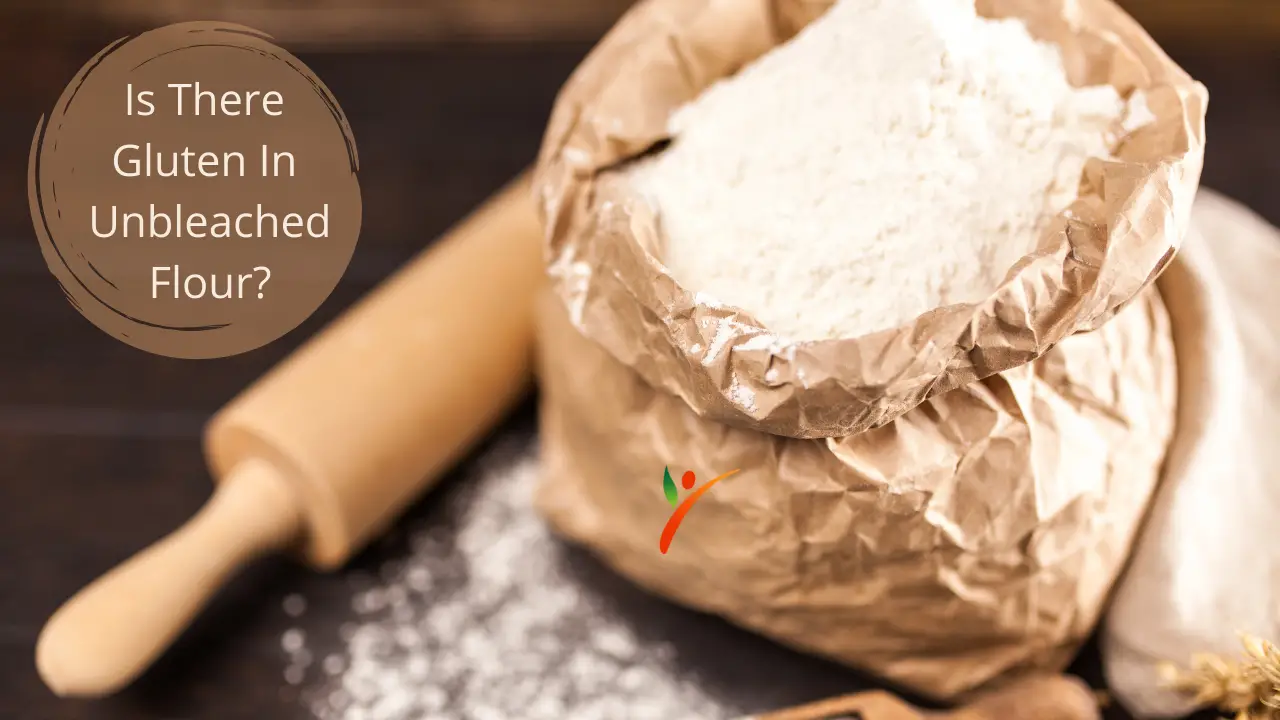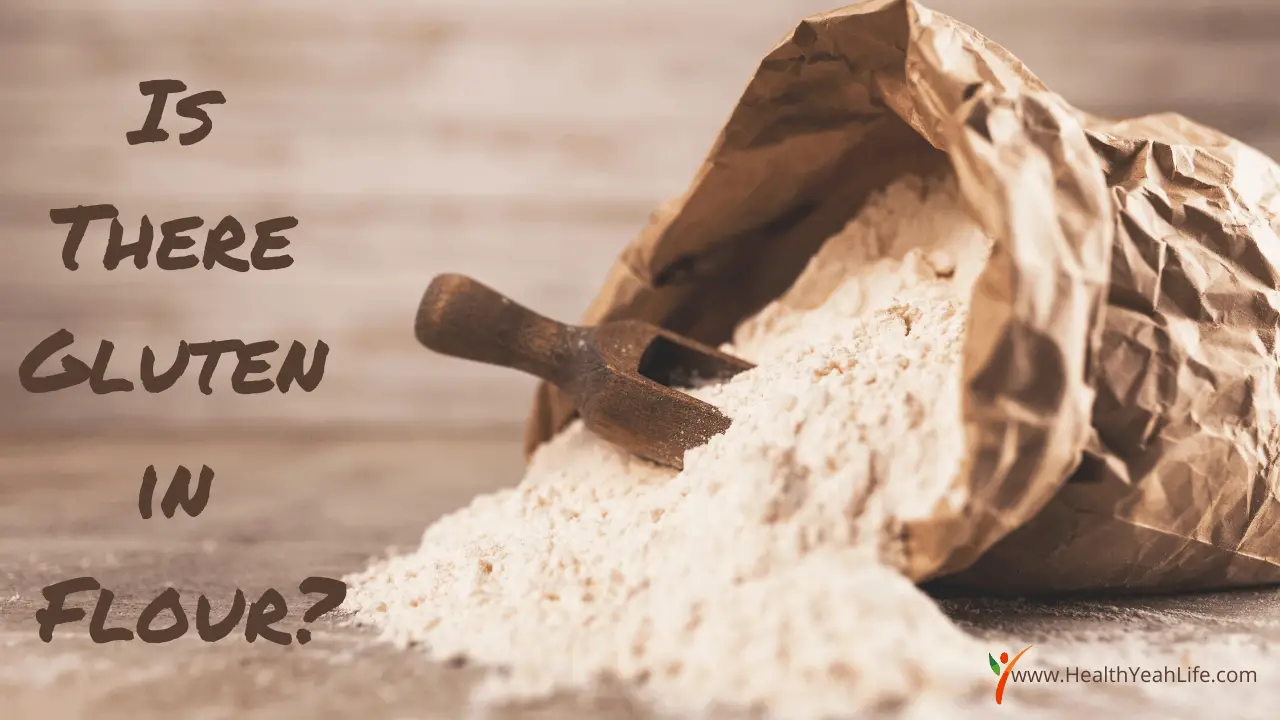An ingredient that is one of the most essential in a kitchen is flour. A lot of the dishes contain flour. So, it may seem almost impossible to completely cut out flour from our diet unless strict dietary restrictions require it.
But no matter what flour you have, there are distinctly two categories.
They are bleached and unbleached flour. If you are super health-conscious and pay close attention to all the food you consume, you indeed check the ingredients of everything you buy. And, if you are on a gluten-free diet whether, by choice or medical necessity, you double-check all foods.
So, have you wondered if there is gluten in unbleached flour? Unbleached flour may sound better, but you still need to be sure there is no gluten in unbleached flour.
Before we find out if there is gluten in unbleached flour, let us cover the difference between bleached and unbleached flour.
What is the Difference Between Bleached And Unbleached Flour?
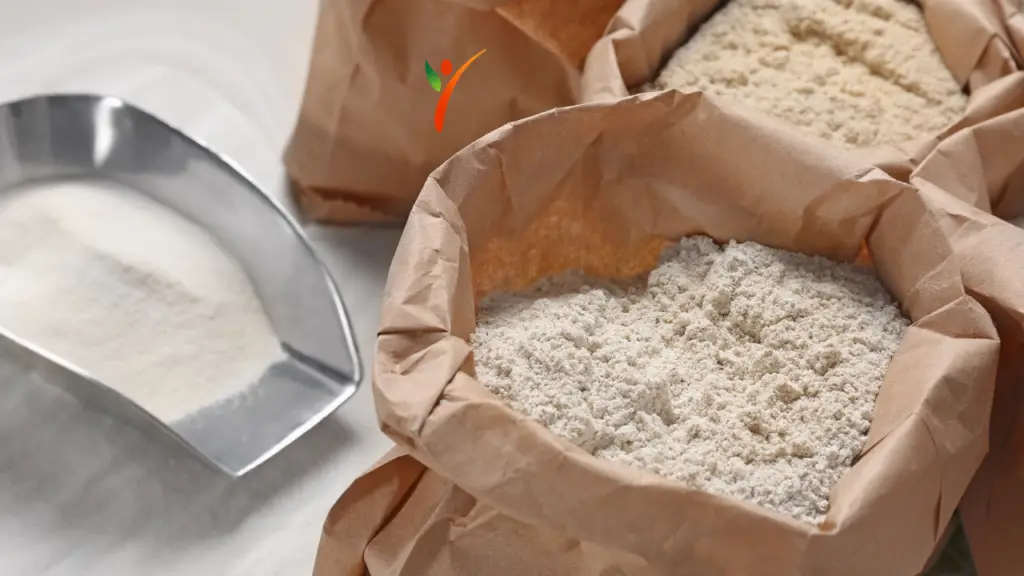
There are several points of differences between bleached and unbleached flour. Here are characteristics of the two flours which separate one from the other
Bleached Flour Processing
Bleached flour is always refined. Refining flour implies eliminating all the nutrient-rich bran of the kernel. It also means that the grain remains void of all its necessary vitamins and minerals and only has its endosperm intact.
The process is then treated with chemicals to help it age quickly.
This aging comes in handy during baking. But the agents that go into this aging are always chemicals like chlorine or potassium bromate, or benzoyl peroxide. Thus, the whole aging process brings about several changes in the taste and the texture, color, and nutrient content of the bleached flour.
Nutrient Profile:
The bleaching process in the bleached flours reduces the content of Vitamin E in them. Otherwise, white flours, whether bleached or unbleached, have almost the same nutrient levels.
Safety:
The aging process of bleached flour, which uses chemicals, is quite problematic. The various chemicals used may prove to add toxins in the body and damage other foods' nutrients.
These also break down the fatty acids in the body, which are quite essential and healthy. Chemicals like potassium bromate have shown diseases resulting in cancers and damage to animals' kidneys when consumed in large amounts.
Characteristics:
Since the bleached flours undergo a foraging chemical process, they also have some appearance changes. They have varying tastes, colors, as well as texture.
This type of flour generally has a softer and more delicate appearance compared to an unbleached one. It also appears to be whiter due to the bleaching. At times, bleached flour may taste slightly bitter to those with a highly sensitive taste.
Uses:
Bleached flours are best for dishes like pie crusts, cookies, waffles, and the likes. It is because of its finer texture and liquid absorption ability.
Unbleached Flour
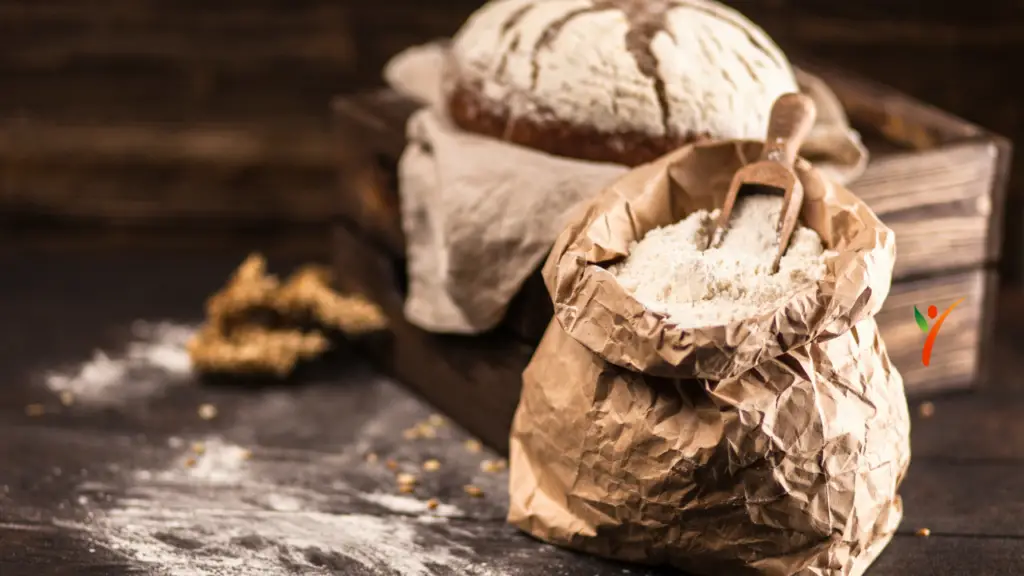
Processing:
Unlike bleached flour, the unbleached flours contain either refined or not refined varieties. They, too, undergo the milling process like bleached flours but are allowed to age naturally.
Although this natural aging process of the grains takes much longer than a chemical process, it is undoubtedly better. The unbleached flour must stay away from harmful chemicals.
Nutrient profile:
Although a significantly less quantity, unbleached flours indeed have more vitamin E than bleached flours. The whole wheat unbleached flour is the richest in terms of nutrient content. It is because of how full of copper, fiber, and many antioxidants.
Safety:
Since the unbleached flour does not go through chemicals, it is relatively safer than the bleached flours. With bleached flours, you can never guarantee the safety of the chemicals used for aging.
Since the unbleached flours undergo a natural process, all its components are natural too. However, we must also remember that bleached flours' limitless consumption in excessive quantities causes health problems. A moderate amount does not cause severe damage.
Characteristics:
Since the unbleached flour ages naturally, its natural elements remain intact.
Not only does it maintain its natural off-white color, but it also has its natural taste, unlike the bitter one of bleached flour. The unbleached flour also has a comparatively denser, coarser, and tougher texture than the bleached flour.
Uses:
Due to the unbleached flour having a denser texture, it is best suited for baking food. The texture of the unbleached flour keeps the baked products in their shape without falling apart.
Some ideal food items that go well with unbleached flour are bread, pastries, rolls, and the likes.
So, is gluten in unbleached flour? Since whole wheat grains can be part of unbleached flour, gluten is present in that flour. Since there is gluten in whole wheat flour, there is no denying its presence in unbleached wheat flour. How then do you get gluten-free unbleached flour?
Let's find out.
The Better Flour

With such a wide variety of flours, one is likely to get confused about which one should they use. Especially when there is an option to choose between bleached and unbleached flour, things can get quite fuzzy.
But while you are at the point of deciding which flour to use in cooking, understand the pros and cons.
Here are some reference points for the most common debates you might have in your mind about which flour to choose.
Unbleached Flour Vs. All-Purpose Flour
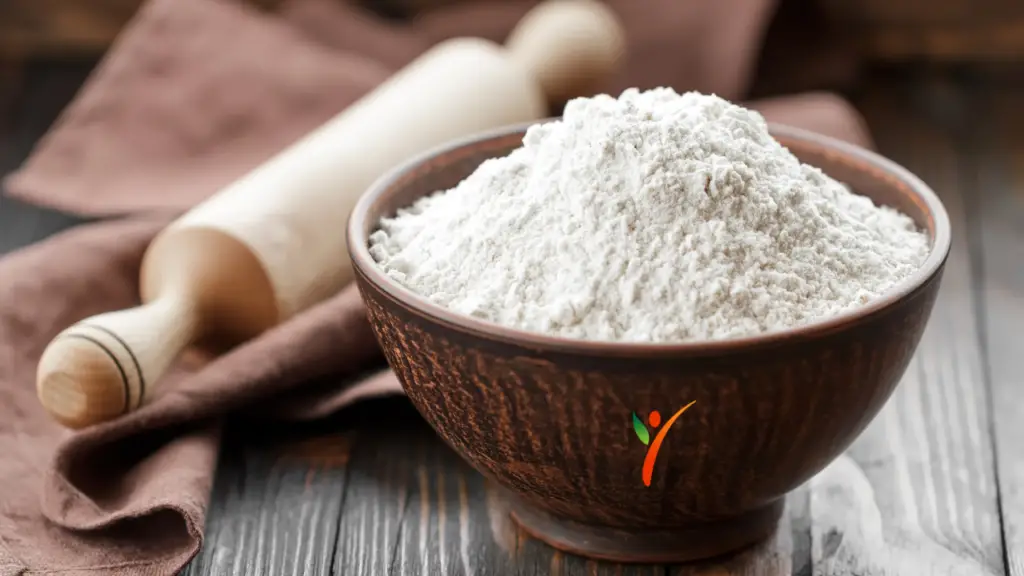
We have already acquainted ourselves with what unbleached flour is. Talking about all-purpose flour, it is nothing but a type of wheat flour. More specifically, it is a type of wheat flour that has undergone a refining process.
Now, this refined wheat has only its endosperm intact in it. All of its other components go out through the refining process. That is how the all-purpose flour comes into being. This flour also remains undamaged for a much more extended period than the wheat flour.
You may be surprised to know that all-purpose flour can also be unbleached and bleached?
Well, since bleaching is a process, it depends on the manufacturers whether they want to put their flour through it or not. Nonetheless, if you are conscious about your gluten, it would be a strict no for you.
Even though the flour has refined particles, it still consists of wheat, which has high gluten content. And if you or your loved one is gluten sensitive, you need to keep it at bay. So even if your all-purpose flour mentions on the label being unbleached, gluten may be present in there.
If you choose a healthier flour option like almond flour or rice flour, it will suit you better. However, even with these flours, you need to ensure that they are unbleached.
Even if you choose gluten-free flour but use one that is bleached on a gluten-free diet, it is sure to be harmful.
Unbleached Flour Vs. Whole-Wheat Flour
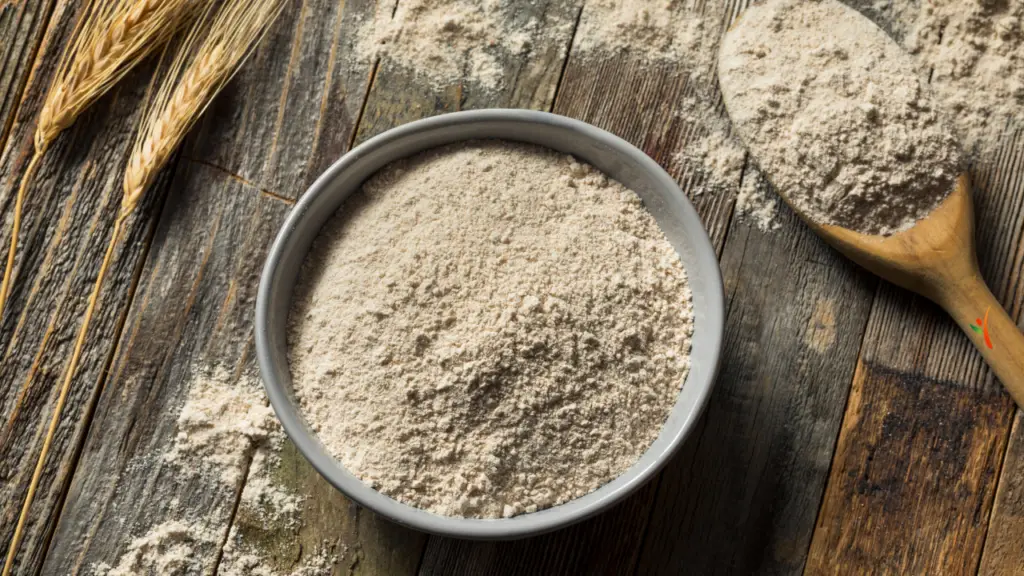
All the wheat components, namely, endosperm, bran, and germ, remain intact in the whole wheat flour. It is not the case in the all-purpose flour or any other refined flour.
The whole wheat flour may or may not use bleaching unless the label mentions explicitly so. It generally retains its coarse texture and off-white color. But just because a brand of whole wheat flour appears to be white does not mean it is bleached.
There is a different variety of whole wheat, which is naturally white, unlike the usual golden or brown ones. The flour of this whole white wheat will naturally be white too.
Again, while you use various unbleached flour, you also need to ensure that it is free of gluten. You cannot trade or compromise on one for the other. Using unbleached flour that has gluten in it will only lead to complications if you are gluten sensitive.
And if you consume gluten-free but bleached flour, that too would prove to be harmful.
You may ask if the two are interchangeable or substitute for each other in specific recipes. As most common kitchen tips would justify, it is best to use the flour specified in a particular recipe.
But, given the rising need for gluten-free food, there are recipes galore that promote gluten-free ingredients.
So, if you opt for such recipes, you can easily use gluten-free flour, which is also unbleached. And if you have an inner chef within, you can always curate a delicious gluten-free unbleached flour recipe on your own!
So how do you exactly know how to differentiate between flours? Or how do you choose the best flour in terms of health? Here are a few tips for you.
Choosing The Right Flour

In the past, people were not very well aware of gluten sensitivity and its impact. As more people have developed gluten sensitivity or just a general health consciousness, gluten-free demand has risen with progressing times.
To meet these rising demands of gluten-free food and ingredients, most food manufacturers and chefs have come up with gluten-free recipe alternatives. So, going gluten-free has become much less complicated now than before.
If you cook often, you know the importance of having just the right ingredients at home as the recipe requires. But making a few modifications to suit your health demands is what you can easily do. Flour is an essential part of many dishes in our daily meals. So, we cannot deny the importance of choosing the right flour.
Here are some healthy flours you could choose. The best part is how they are entirely gluten-free. However, you should always check the labels to ensure they are unbleached.
Almond flour
Blanched almonds are the source of almond flour. The health quotient of almonds is a given. You can imagine how much healthier your dish will be if you incorporate almond flour in it instead of the other flours.
Almond flour has loads of proteins and has a low carb content. But while you use almond flour, you must be careful about the quantity in the recipes. You cannot use the same amount of almond flour as a recipe for another type of flour.
Chickpea flour
If you are vegan or plan to be one, chickpea is your ultimate go-to. Chickpea flour is a complete plant-based source of protein and fiber. This type of flour has been quite popular for ages, particularly in Indian and Middle Eastern cuisines. It is the most suitable for use in baked dishes.
Surprisingly, you can bake some super delicious crackers, bread, and pizzas using chickpea flour.
Quinoa flour
If you have been gluten-free for some time, you indeed are well aware of the benefits of quinoa. And if you plan to go on a diet for weight loss, quinoa is your best bet. If you replace rice with quinoa, you will see the pounds shedding in no time at all!
Did you know that quinoa seeds are full of essential amino acids and are therefore an excellent option for vegetarian cuisines? Most nutritionists who promote gluten-free food also widely promote the use of quinoa. Therefore, rest assured that you cannot go wrong with choosing quinoa flour for daily use.
Final Words

Choosing the right flour constitutes half of the health quotient of your dishes that contains flour. Food adulteration has become a common phenomenon now, and you need to be careful about it.
Although finding gluten-free and unbleached flour may not be extremely easy, it sure is not impossible. If your local supermarkets do not have them, you can always place orders online. Ensure that you check the labels thoroughly and buy from authentic and trusted brands!

